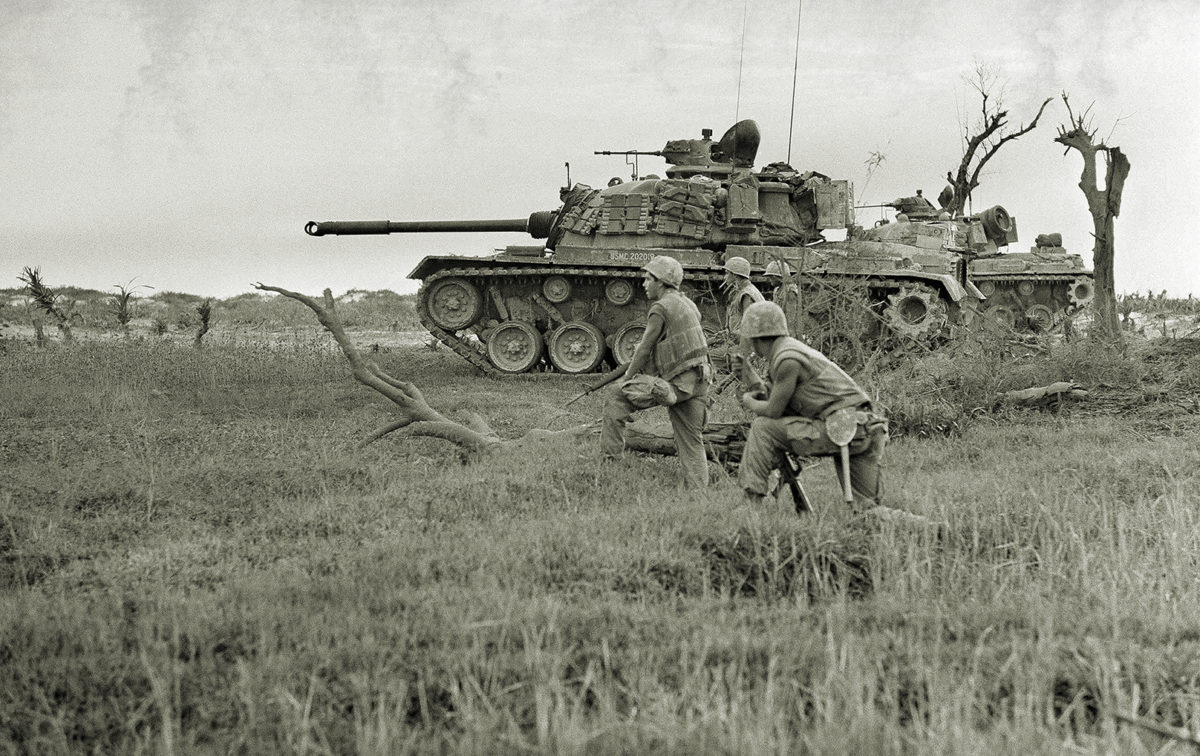Late in the afternoon of Jan. 14, 1967, three tanks with the Ace of Spades painted on their hulls rolled into the command post for the 3rd Battalion of the 1st Marine Regiment, 1st Marine Division, near Cau Ha, about 15 miles southeast of Da Nang. The tanks comprised the heavy section of 2nd Lt. Jim Ray’s 2nd Platoon, Charlie Company, 1st Tank Battalion. Ray was in Hawaii for rest and recuperation, leaving three M48A3 Patton tanks under the command of acting section leader and tank C-25 commander Sgt. John Bartusevics, a 12-month veteran of in-country combat.
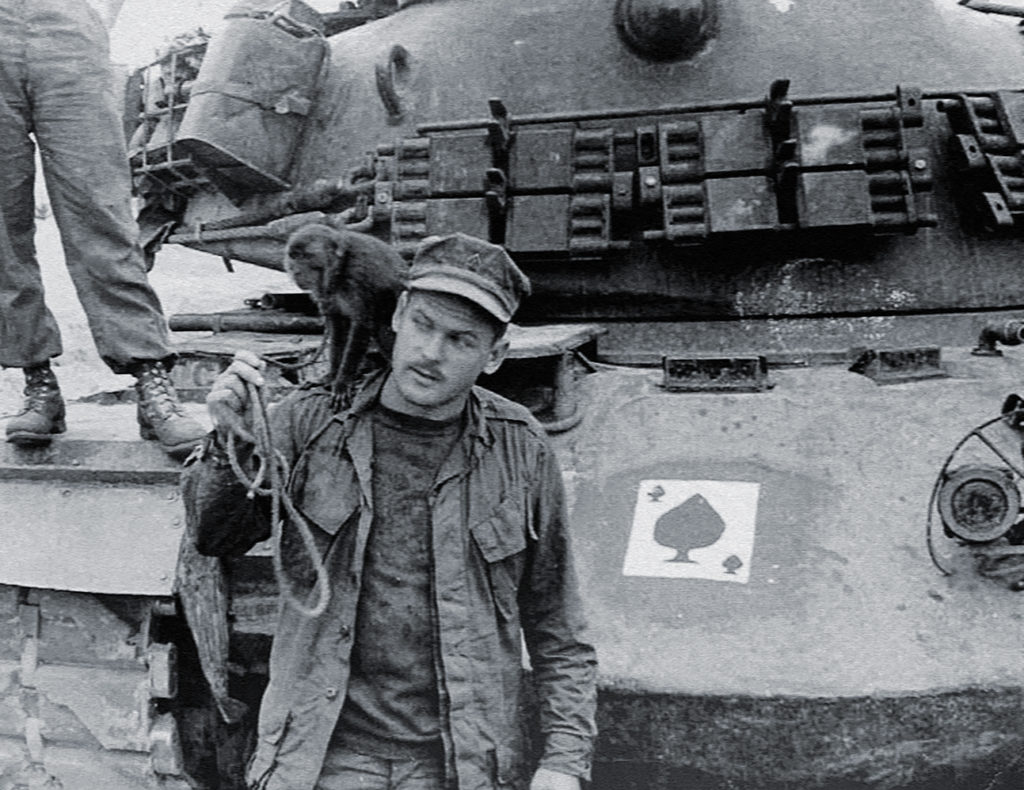
The heavy section escorted Marine infantrymen into the field, an area that was mostly tree lines, rice paddies and sand dunes. Normally, the tanks rotated back to the 3rd Battalion Command post every three to five days to undergo repairs, rearm and refuel before taking another group of grunts into the field. That work never took longer than an hour or two, but the tanks were late getting in with a group from Lima Company, so Bartusevics decided to remain overnight at the Charlie Company command post, attached to the battalion command post, and head out at dawn.
In the field “most of the guys slept in the tanks,” Bartusevics recalled. “It was very uncomfortable. You couldn’t stretch your legs out. You either slept sitting up or propped your legs up.” Cpl. Ed Boyette, the loader on tank C-23, commanded by Cpl. Gary Soncrant, remembered, “It was going to be our first evening off in quite a while in a hooch with a real bunk.”
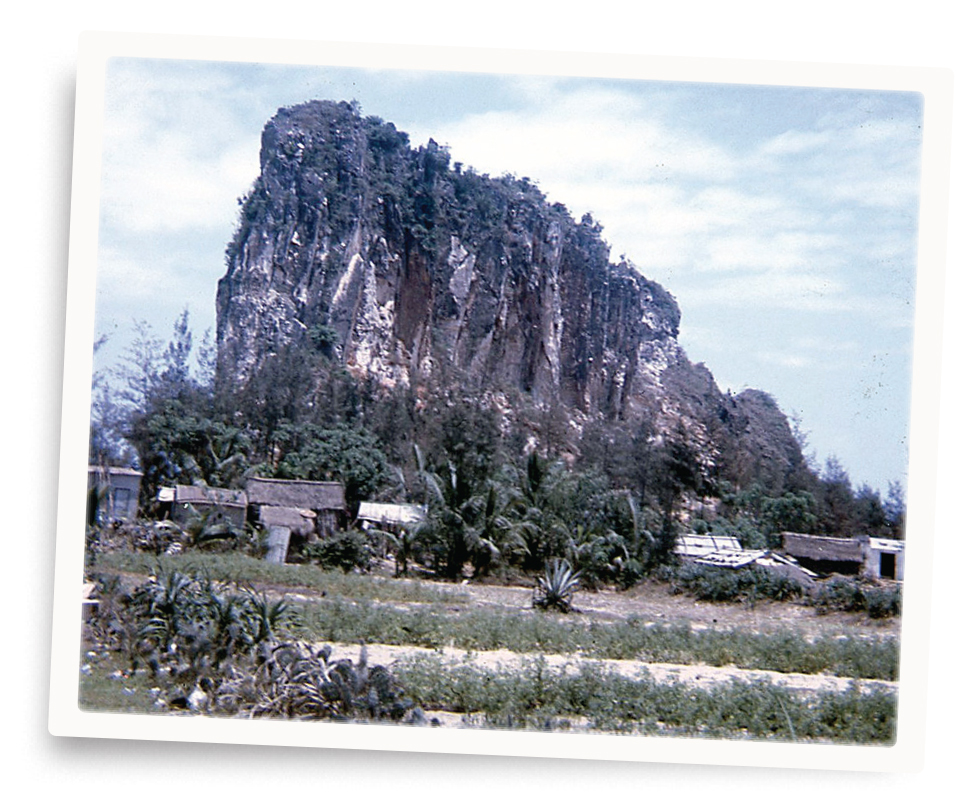
Just after midnight on Jan. 15, when the tank crews at the command post were sleeping “we started hearing mortars and artillery and crap like that,” recalled Lance Cpl. Rick Lewis, the gunner on C-23. The explosions were quickly followed by the faint sounds of gunfire.
The firing and explosions were coming from a platoon patrol base known as the Desert Position or Sand Dunes, a few miles southwest of Marble Mountain, near the hamlet of Khai Tay. The platoon patrol base was one of several set up inside a crescent-shaped zone guarding southern approaches to Da Nang and dubbed the Mortar Belt because the North Vietnamese Army continually conducted rocket and mortar attacks on air facilities at Da Nang and Mable Mountain. The Marine patrol bases were responsible for keeping an eye on enemy movements.
Two depleted platoons from Kilo and Mike companies of the 3rd Battalion, 1st Marines, were manning the Desert Position. The tankers assumed they would be immediately called to respond to the threat. As the minutes passed and no orders came, the men wondered why they were still parked there. A few minutes later, a junior officer ran in and said the tanks were needed. “Everyone up!” Bartusevics shouted. “We’re going back out!” The crews jumped up, grabbed their gear and ran to the tanks. It was 12:30 a.m.
The crewmen saw mortar flashes in the distance as they climbed aboard their tanks. They revved their engines and lined up, preparing to pull out. After 15 minutes, an officer emerged from the combat operations center. He told Bartusevics that a reserve force of grunts and amtracs (tracked amphibious landing vehicles) was being assembled to join them. The tankers were ordered to stand down and wait.
Twenty minutes went by, then 30. During this time the tankers listened intently to the radio, hearing men yelling orders and screams from the wounded mixed in with the sounds of gunfire and explosions. An additional 15 minutes passed. Flashes lighting up the sky all around the platoon patrol base could be seen from the battalion command post. Staying put, just sitting there was excruciating for the tankers.
Finally, a frustrated Bartusevics ran back to the combat operations center and declared he wasn’t waiting any longer, adding: “Just send the grunts and amtracs when they’re ready.” Walking out, Bartusevics asked for a crypto radio so he would have a secure line with the infantrymen in the platoon base and those back at the combat operations center. Lance Cpl. Greg Auclair, the driver of Soncrant’s C-23, recalled that a few minutes later an operator ran out with the radio, yelling: “You guys need to get down there. They’re getting overrun. They’re getting wiped out.”
“The hell with it!” Bartusevics barked to his crews. “We’re going. Put the grunt radioman up on the lead tank.” Not one of the tankers hesitated.
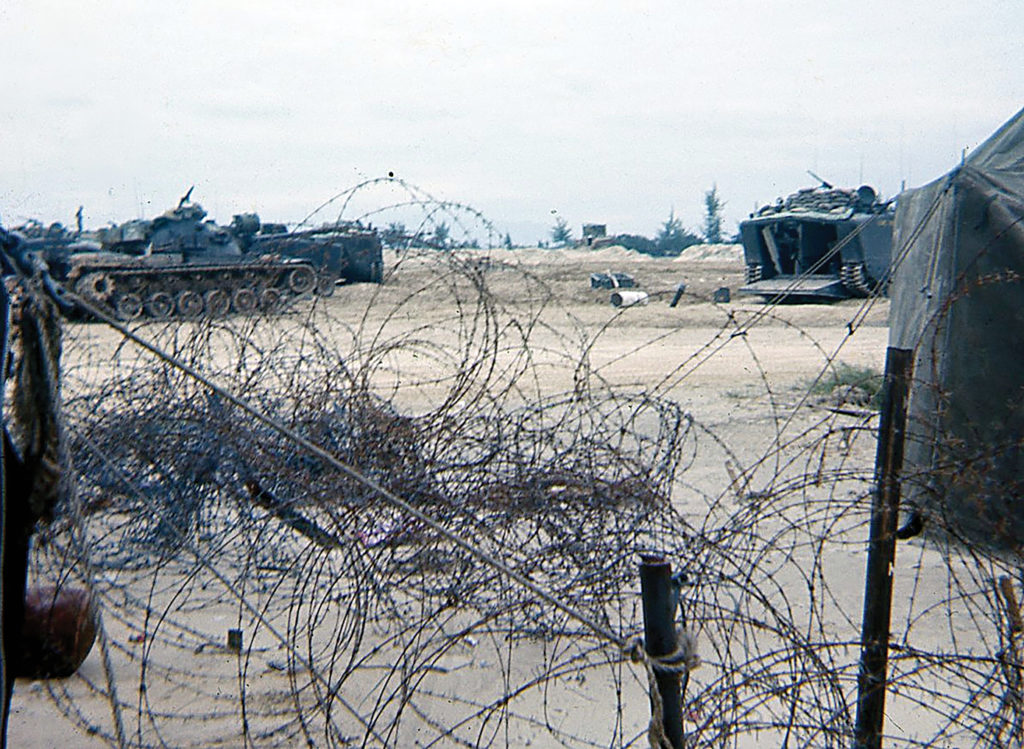
Under normal circumstances, sending tanks on an operation without infantry support was too risky. But Bartusevics took the initiative and lurched forward. He turned to the radioman, positioned behind the turret next to him. “Tell COC to send the amtracs ASAP,” the sergeant ordered. “We’re leaving!” The tanks took off with Bartusevics and C-25 in the lead, followed by Soncrant’s C-23 and C-24, commanded by Cpl. John
McNally.
Like the U.S. cavalry of the Old West, the Marines in their three Ace of Spades iron monsters rode to the rescue. The time was now 1:55 a.m. The distance between the battalion command post and the Desert Position was 4½ miles. Bartusevics had served in Vietnam long enough to know that the most likely route between the battalion post and the platoon patrol base was undoubtedly mined, and pockets of NVA troops would be positioned along the way, ready to ambush any reinforcements headed to the base.
Instead of making a beeline for the base, Bartusevics set off across the rice paddies and solid terrain, then jumped onto the main supply route running north and south. He crisscrossed back and forth on the supply route, then turned west near Ngan Cau, hoping to flank any enemy waiting to ambush the tanks in the wide-open sand dunes.
“We went as fast as a 54-ton tank can go,” recalled Auclair of C-23. The tanks bounced along and at one point plunged down a 12-foot embankment. “That’s one time I found out you could actually go weightless in a tank,” Lewis said. “One second I’m sitting in the gunner’s seat and the next I’m floating up to the top of the tank. It was quite an experience when we hit!”
Approaching the base from the southeast, the tankers could see green tracers from the attackers and red tracers from the Marines going in all different directions. Once the tankers got within sight of the base, Auclair remarked that the scene looked like Christmas with all the red and green tracer fire going everywhere.
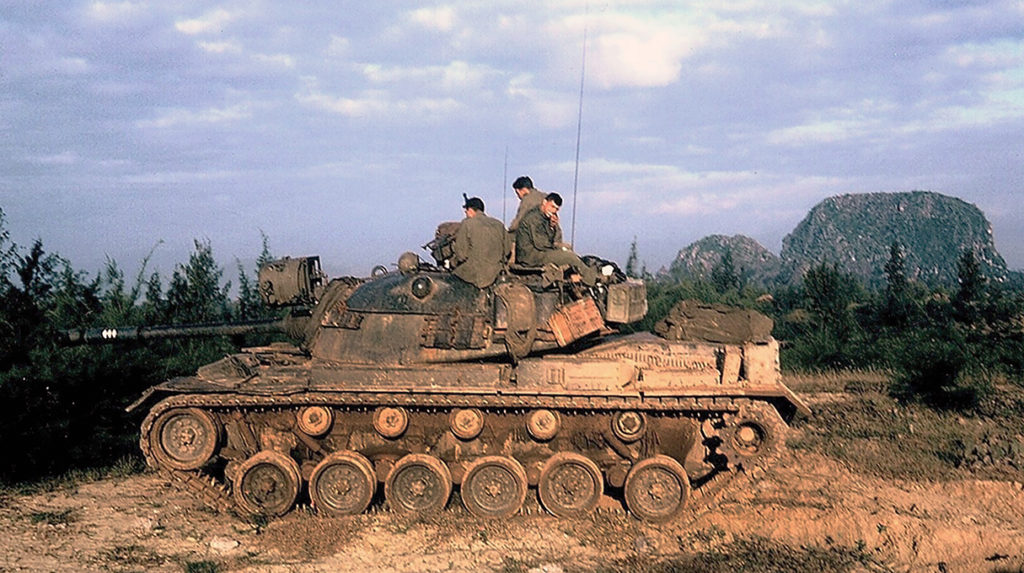
The tankers realized that the situation inside the platoon base was becoming more dire by the second. They heard incessant firing, explosions, yelling and screaming over the radio. Boyette of C-23 recalled that someone came on the radio shouting, “They’re all over the place!” Every tanker knew he was about to take part in his toughest fight yet.
After pulling up at the concertina wire perimeter, the tankers came to a full stop. They were stunned by the intensity of the battle around them. “The scene was complete chaos,” Boyette remembered. Red and green tracers were crossing each other in all directions. There was hand-to-hand fighting everywhere. Almost immediately, rounds from North Vietnamese AK-47 assault rifles inside the perimeter began bouncing off the tanks. It was 2:05 a.m.
The tanks moved a little farther along the perimeter and attempted to enter through the gate, which was nothing more than a jumble of concertina wire strung across the entrance. Pfc Jack Mitchell of Mike Company rushed forward to drag the gate open. Boyette jumped down to assist. Both immediately came under withering fire as they struggled to clear the entrance.
Frustrated that it was taking so long, Bartusevics yelled over the radio, “We’re going over the wire!” Generally, that’s a bad move for tankers. The wire can easily catch in the tank’s sprockets and be pulled in, turning the tank into nothing more than an immobilized sitting duck. However, Bartusevics knew his crews needed to get inside the base quickly if the defenders were to have any hope of surviving the night. He also knew that punching straight ahead lessened the chances of becoming mired in the wire.
The three behemoths entered in column with bullets bouncing off the sides and front as they plowed over the wire just left of the gate, running down Viet Cong in the process. All of the tanks were equipped with the new Xenon searchlight, much more powerful than the original barrel lights. Bartusevics recognized the advantage these lights presented and had the covers removed just before leaving the battalion command post.
He ordered his crews to switch on their lights. “I thought the lights would lighten up the area and also blind the Viet Cong and NVA,” Bartusevics said. The tactic worked. Incoming shots began missing, passing too high or too low. When the lights came on, the crew immediately saw bodies and body parts everywhere.
The Viet Cong quickly realized they were unprepared to deal with tanks entering the fray. “Not too long after a couple of tanks arrived, the VC started making their way back to the trees as fast as they could,” said infantryman Pfc. Butch Kempka of Mike Company.
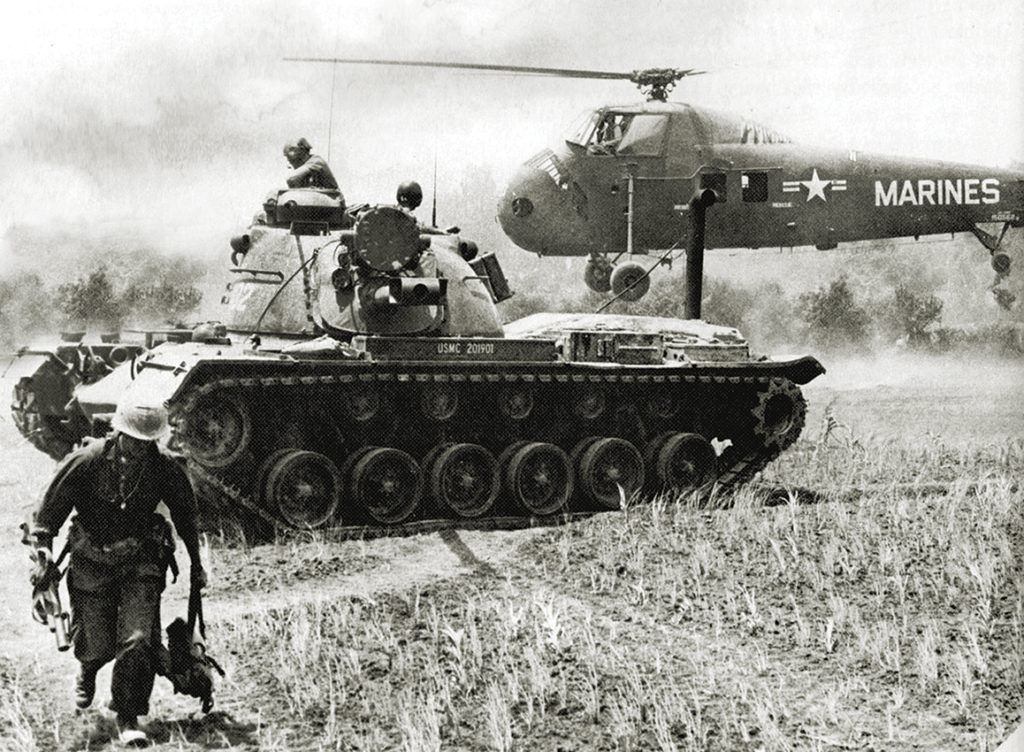
The NVA soldiers, however, were more seasoned and determined fighters. Bartusevics split his tank column, sending McNally and C-24 to the left while Soncrant and C-23 proceeded to the right. Bartusevics in C-25 moved straight forward. As the tanks were splitting off, he reminded the crews to be careful in their movements because the battlefield was strewn with dead and wounded Marines. Bartusevics also ordered the crews not to use their 90 mm main gun, as they were likely to take out as many Marines as North Vietnamese. Instead, the tankers went in with their .30-caliber and .50-caliber machine guns, as well as any side arms they were carrying.
Soon after the tanks entered the compound, Sgt. Roger Lipscomb, the platoon sergeant of Kilo Company, climbed aboard Bartusevics’ tank and pointed out where the attacks were coming from, the locations of heavy weapons and the command post. He also alerted Bartusevics to the presence of a four-man listening post that was outside the wire to the north. The men were surrounded and pinned down. Two were badly wounded. Bartusevics ordered Soncrant’s C-23 crew to assist them.
As the Viet Cong, NVA and Marine infantrymen mixed together in brutal close-quarters combat throughout the platoon base, the tanks waded into the fight with their machine guns blazing. When the tanks split apart, each moved independently through the base, acting as mobile bunkers.
Taking the right flank, Soncrant fired the sky mount .30-caliber machine gun on the cupola, while Lewis was in his seat firing the .50-caliber coaxial machine gun on the turret just below and to the left of the 90 mm gun. Boyette was below, feeding ammunition belts as fast as he could. Driver Auclair was forced to stand in his hatch so he could see where he was going, making himself a perfect target for enemy fire. He responded by taking out his .45-caliber pistol and picking off NVA troops rushing toward him.
By this time, the North Vietnamese troops were overrunning most of the base. Soncrant saw that his crew was in imminent danger. “Traverse right!” he yelled to Lewis. The turret immediately swung sharply to the right. Lewis, peering at his whole world through the narrow view of his scope, was stunned to see a Marine and an NVA soldier locked in hand-to-hand fighting directly in front of him. In a split second, another NVA soldier ran up and shot the Marine in the back with his AK-47, killing him instantly. Lewis pulled on the trigger of the .50-caliber coax gun and gave the two NVA soldiers a burst that nearly cut them in half.
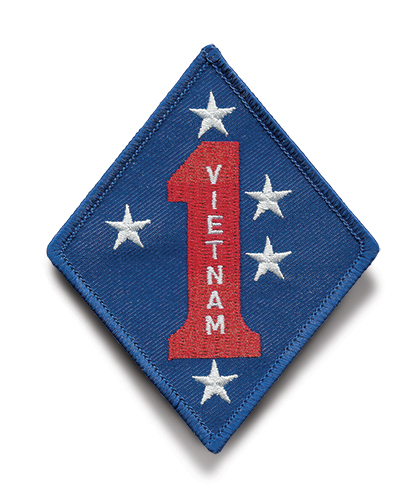
When Soncrant and his crew swung right, they unknowingly turned straight into the main thrust of the NVA attack. “I kept traversing right and picked up a wave of NVA rushing our right flank,” Lewis recalled. “They were so close you could see their eyeballs. I just laid on the gun switches and kept firing until I realized Soncrant was hollering at me to cease fire.”
Pfc. Don Reed of Mike Company remembered that “when the tanks came in there was a second wave of Viet Cong and NVA rushing us. Some guy on a .50 started up and dropped every one of them—saved our hides.”
“Now we started hunting,” Boyette said. “We ran over a number of Viet Cong as we moved about looking for pockets of NVA fighters.” The C-23 tank continued along the bunker-lined perimeter and fired at enemy targets. Soncrant, still on the sky mount .30-caliber gun, was joined by Boyette, who was out of his hatch firing an M14 rifle and his .45-caliber pistol. Auclair unloaded his pistol while maneuvering the 54-ton tank through an obstacle course of dead and wounded Marines, blown bunkers and debris.
Meanwhile, Bartusevics, in C-25, noticed that the heaviest firing was coming from the mess hall tent and directed at the command post bunker. The enemy in the mess hall became his immediate priority. As the tank moved forward, it received heavy fire from three sides. Lance Cpl. John Koski, the loader, came up through his hatch, firing in all directions with his M14, “picking off guys that were trying to get on the tanks,” remembered Bartusevics. The sergeant and Koski observed a group of NVA on top of the command post and together quickly dispatched them.
Bartusevics saw the NVA occupants of the mess hall setting up a machine gun to fire on the command post. Lewis recalled later that he heard Bartusevics yelling over the radio: “They’re in the mess hall tent!” Setting his sights on the target, Bartusevics yelled to his driver, “Reb,” real name Cpl. Joe Deluca: “Hunker down, but keep the hatch open.” As the tank moved forward, Bartusevics shouted again to Deluca: “Go straight! … Now, step on it! … Don’t stop till I tell you to!” The tank ran full speed ahead—right over the mess hall, crushing the structure, including the machine gun and all the NVA intruders.
Pfc. Mario Rojas of Kilo Company saw a tank coming and ran to it. He found Sgt. Robert Demark of Kilo already on top of the vehicle, McNally’s C-24. The corporal was taking his tank around the southern perimeter of the compound. Demark held out his hand to Rojas and pulled him aboard. Soon they were joined by four other grunts. “We had a turkey shoot then,” Rojas said. “NVA soldiers kept trying to jump on the tanks, and we just kept kicking them off and shooting.”
Meanwhile, Soncrant’s tank moved into an area with bunkers on its right and left. Suddenly the tank lurched forward to a complete stop. An infantry sergeant jumped on board and pointed to the location of the listening post outside the wire, 50 yards into the tree line to the north.
“There’s just Viet Cong in front of us,” Auclair declared. “I’m going forward!” The tank swerved right and moved forward to an opening blown in the wire by a bangalore torpedo, a long metal tube packed with explosives. Boyette climbed out of his hatch, moved across the tank, jumped off the front fender and ran through the opening in the wire, “hauling ass and firing his .45 as he ran to the tree line,” remembered Lewis.
Boyette found the listening post just inside the trees. Soon he was sprinting back to the tank carrying one of the wounded riflemen on his shoulders, shooting down the enemy as he came in. Laying the man on the back of tank, he turned to Lewis and asked for another clip for his pistol. Lewis obliged. Boyette replaced the empty clip, chambered the round and headed back out to the tree line to retrieve the second wounded Marine.
We Had A Turkey Shoot. NVA Soldiers Kept Trying To Jump On The Tanks, And We Just Kept Kicking Them Of And Shooting.
“I grabbed him, flung him over my shoulder and took off for the base,” Boyette recalled. With the two wounded Marines aboard, Auclair backed the tank up to the medevac area to unload their precious cargo before continuing forward along the perimeter once more.
Most of the NVA and Viet Cong were now outside the perimeter, and the tankers took the opportunity to set loose their 90 mm guns on the fleeing enemy. About this time, Bartusevics received word over his radio that the amtracs and infantry sent from the battalion command post were lost.
After ordering Soncrant and McNally to help mop up at the platoon base, Bartusevics set out alone in search of the amtracs. He radioed the amtrac crews and told them he would shine his searchlight straight up into the sky for a few seconds, turn it off, then on again. He did this periodically until the amtracs were able to get their bearings. Bartusevics then escorted the reinforcements to the base. By the time they got there the fighting was all but over.
It was about 4 a.m. when helicopters began arriving to medevac the wounded. After sweeping the area once more, the tankers assisted the infantrymen in recovering bodies. They also took stock of the base. One mortar was knocked out. The recoilless rifle and a machine gun bunker were destroyed. Several gun positions had been blown apart. After-action reports stated that 45 percent of the bunkers were destroyed by explosions from mortars, explosive-filled satchels and Chicom grenades, wooden-handled grenades made by Chinese communists.
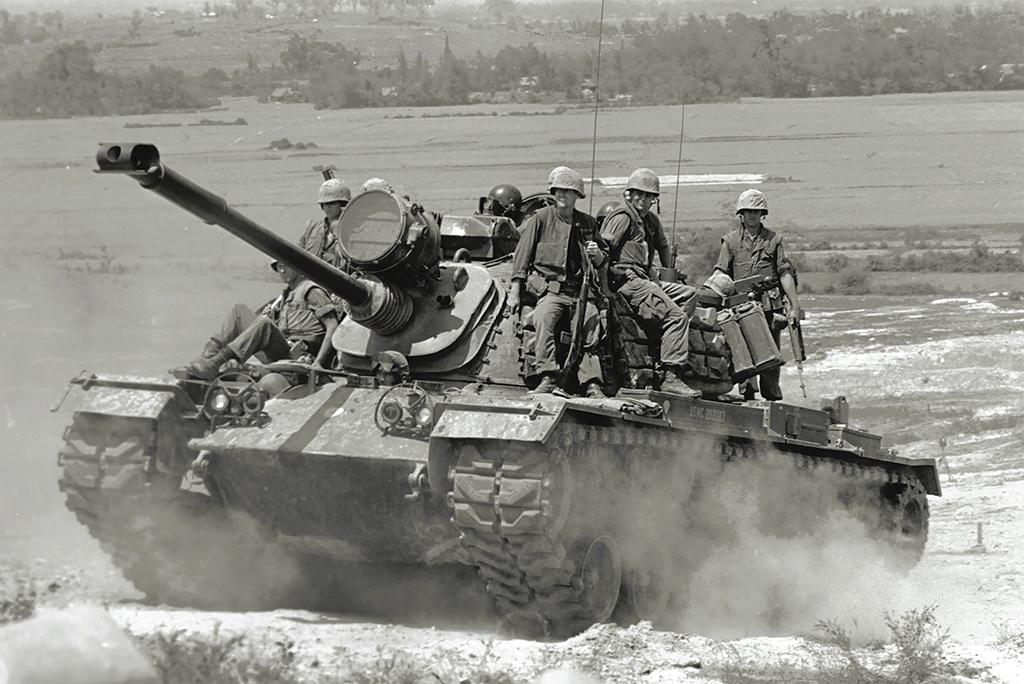
The defenders of the Desert Position had fought off a battalion of about 360 men from the North Vietnamese V-75th Regiment, along with numerous local Viet Cong and at least two units of sappers, highly skilled commandos. Outnumbered more than 6-to-1, the defenders endured explosions, automatic weapons fire and hand-to-hand fighting with bayonets until relief came in the form of three “chariots of angels,” as Rojas later described the Marine tanks.
The Marines lost 16 killed and 33 wounded of a 79-man force. All the casualties were among the infantrymen. The tanks were credited with 20 confirmed enemy killed and 10 probable. The total number of Viet Cong and NVA casualties was officially reported as 61, but every man involved in the fight agreed that those numbers were greatly undercounted.
Auclair remembered the pre-dawn hours of Jan. 15, 1967, at the Desert Position as “the most terrifying night I ever spent in Vietnam!”
Late in the afternoon, the tanks escorted the amtracs and infantrymen back to the battalion command post. That night the tankers got a well-deserved rest. The following morning, fully resupplied, 2nd Platoon, Charlie Company, 1st Tank Battalion, went back out into the field. Bartusevics was awarded the Silver Star for his actions on Jan. 15. His driver, Deluca, and Boyette, the loader on Soncrant’s tank, received the Bronze Star. Lewis later confided: “It was a good thing that Bartusevics received the Silver Star. He certainly deserved it. Otherwise he probably would have been court-martialed for disobeying orders.” That night, the tank crews were like all good Marines. They improvised, they adapted, and they overcame.
Samuel N. Thomas Jr. is a military historian, published author and museum director of the T.R.R. Cobb House in Athens, Georgia, where he lives.
This article appeared in the Autumn 2022 issue of Vietnam magazine.
GET HISTORY’S GREATEST TALES—RIGHT IN YOUR INBOX
Subscribe to our HistoryNet Now! newsletter for the best of the past, delivered every Monday and Thursday.

